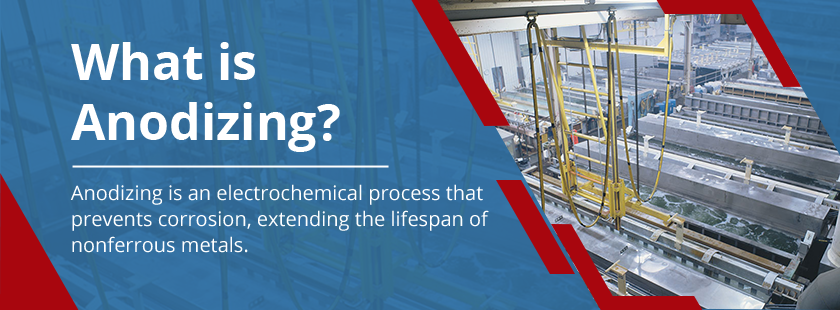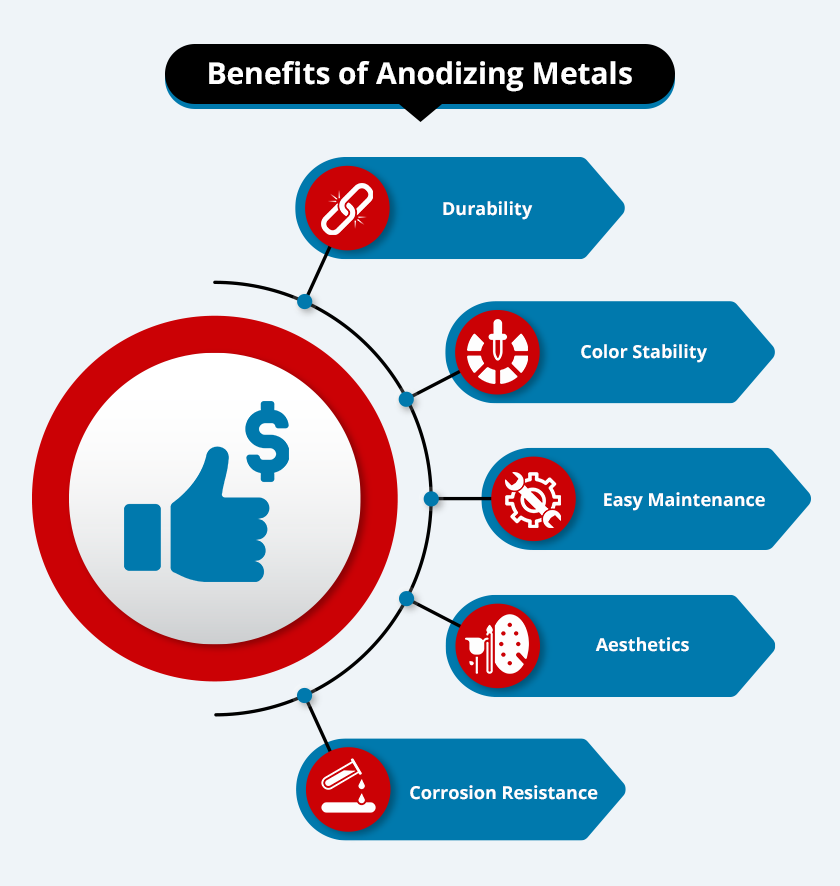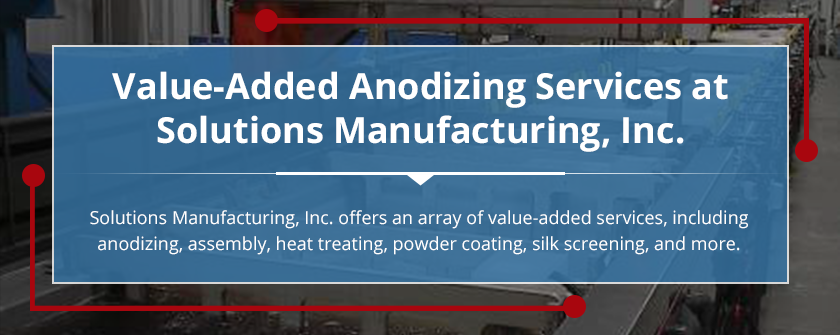Anodizing is a value-added service that can improve the appearance and longevity of nonferrous metal surfaces, creating a bright surface finish that resists abrasion and corrosion. We offer anodization as one of many value-added service options at Solutions Manufacturing, Inc. In this blog, we will discuss the process of anodizing, as well as its benefits and common applications.
What Is Anodizing?
Anodizing first gained popularity in the 1920s, and the fundamental elements of the process have remained largely unchanged. Anodizing is an electrochemical process that prevents corrosion, extending the lifespan of nonferrous metals. Although aluminum is the ideal metal for anodizing, it is also possible to anodize the following metals:
- Titanium
- Stainless steel
- Magnesium
The anodization process works by converting the surface of the metal into an anodic oxide finish, which can range from 5 to 30 µm in thickness. Because the anodized finish is fully bonded with the surface of the metal, there is no risk of chipping or cracking over time. Anodization functions as a barrier against corrosion, but it can also serve aesthetic purposes. The finish can be natural or tinted, depending on the aesthetic requirements of the final product.
Anodizing Process
Anodizing is a type of controlled oxidation that occurs when submerging the component into an acid electrolyte bath. A cathode mounted within the anodizing tank passes an electric current through the medium, and the metal functions as an anode. The reaction causes the electrolyte to release oxygen ions that then merge with the atoms on the surface of the metal, creating the anodic oxide finish that will protect the component.
Benefits of Anodizing Metals
There are several significant benefits of anodizing aluminum and other metal components.
- Durability: Anodized components can resist abrasion in harsh environments. The anodizing process also produces consistent, long-lasting results. In fact, anodized metals can retain their integrity for over 40 years, reducing the need for expensive maintenance and repairs.
- Color stability: When anodizing a metal, it is possible to add a light or dark tint that remains stable even with UV exposure and abrasion. Unlike painting and powder coating, anodizing finishes ensure the final product will not fade or chip over time.
- Easy maintenance: Anodized metals are easy and affordable to maintain. In most cases, a mild detergent is enough to clean the surface.
- Aesthetics: Whether tinted or natural, anodized metals have a bright surface finish that makes for an attractive final product.
- Corrosion resistance: The oxide layer of anodized metal significantly improves the corrosion resistance of the part.
Applications and Industries
Anodization is a popular manufacturing process for a range of commercial and industrial applications. Some of the most common applications utilizing anodization include:
- Hydraulic valves
- Aviation instruments
- Electronics
- Military/defense components
- Oil rigs
- Dock components
- Ship hulls
- Appliances: refrigerators, microwaves, dryers, ranges, TVs
Value-Added Anodizing Services at Solutions Manufacturing, Inc.
At Solutions Manufacturing, Inc., we are dedicated to providing our customers with the highest quality precision parts. We combine decades of expertise with state-of-the-art equipment to meet the needs of customers in industries ranging from electronics to food service. To fulfill these diverse manufacturing needs, we offer an array of value-added services, including anodizing, assembly, heat treating, powder coating, silk screening, and more.
For more information about our metal anodizing process and other manufacturing services, contact us or request a quote today.


